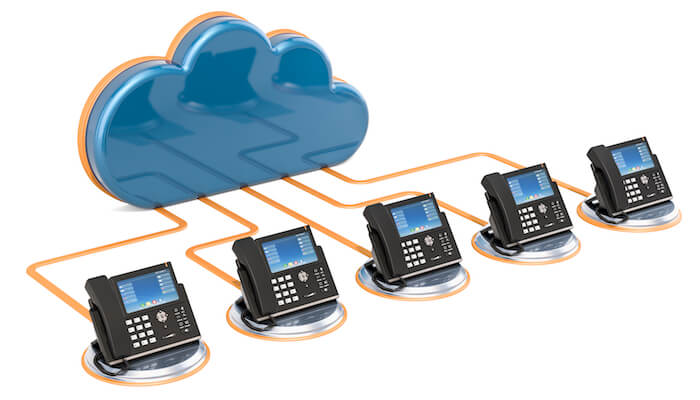The Advancement of Phone Solutions: From Landlines to VoIP
The globe of phone systems has undertaken an exceptional improvement over the years. In this post, we will discover the trip of phone systems, beginning from the very early telephone technology to the intro of digital phone systems, and finally, the development of VoIP. As we delve into the future of phone systems, it ends up being evident that VoIP is below to remain, forming the means we connect and interact in the electronic age.
Early Telephone Innovation
Early telephone modern technology's advancement played a critical duty in transforming communication approaches. At the forefront of this technical development was Alexander Graham Bell, who is attributed with designing the telephone in 1876. Bell's invention noted a significant turning point in the history of interaction, as it permitted real-time, long-distance conversations to occur.
The very early telephone systems depended on landlines, which were physical connections in between 2 telephones with a network of cables. These landlines made it possible for voice signals to be transmitted over cross countries, bringing people more detailed together and assisting in immediate interaction. While the preliminary telephone systems were limited in extent and accessibility, they laid the structure for the growth of even more innovative interaction modern technologies in the future.
Among the key innovations in early telephone technology was the intro of the switchboard system. The switchboard permitted multiple telephones to be attached to a main exchange, making it possible for users to make phone calls to various areas. This development considerably broadened the reach and availability of telephone communication, as it got rid of the requirement for a straight physical link between two telephones.
Shift to Digital Phone Systems
The innovation of telephone technology caused the transition from landlines to electronic phone systems, marking a significant change in the method interaction was performed. Digital phone systems, additionally called Voice over Internet Protocol (VoIP) systems, utilize internet links to send voice signals instead of typical copper wires. This shift to digital phone systems has actually caused countless advantages for individuals and businesses alike.
VoIP systems get rid of the need for several phone lines, as all telephone calls are transmitted over the web. Additionally, worldwide calls can be made at substantially lower prices compared to traditional phone systems.
An additional advantage of electronic phone systems is enhanced performance. VoIP systems provide a wide variety of functions such as call forwarding, voicemail, telephone call recording, and video clip conferencing. These functions enhance interaction performance and enable companies to work together better. Electronic phone systems can easily integrate with various other service communication tools such as email and instantaneous messaging, offering a linked and streamlined interaction experience.
Introduction of Voip Modern Technology
With the intro of VoIP innovation, the landscape of phone systems started to shift towards a much more affordable and efficient interaction option. VoIP, or Voice over Internet Procedure, enables individuals to make phone calls over the web rather than typical landlines. This modern technology transforms voice signals into digital packages and transfers them over data networks, removing the demand for specialized phone lines.

An additional benefit of VoIP is its versatility and scalability. With traditional phone systems, adding or getting rid of phone lines can be a cumbersome and pricey procedure. However, with VoIP, individuals can easily add or get rid of lines as required, making it a much more scalable solution for businesses of all dimensions.
Furthermore, VoIP modern technology provides a broad variety of attributes that improve interaction efficiency. These attributes consist of voicemail to email transcription, call forwarding, meeting calling, and auto-attendant systems. These functions not only enhance efficiency but also make communication a lot more hassle-free and obtainable.
Advantages of Making Use Of Voip
Just how does VoIP modern technology offer substantial advantages over typical phone systems? VoIP, or Voice over Net Method, has transformed the way we communicate by supplying various advantages that traditional phone systems merely can not match.
Unlike traditional phone systems that depend on physical phone lines, VoIP makes use of a net link to transmit click to investigate voice information. In addition, VoIP systems often use competitive pricing strategies that include limitless residential calling, additional reducing communication expenditures.
Second of all, VoIP technology uses increased versatility and scalability. Traditional phone systems are limited by the variety of physical phone lines, making it expensive and tough to add or eliminate lines as required. On the other hand, VoIP enables very easy scalability, enabling companies to add lines or expansions without the need for added equipment.
An additional benefit of VoIP is its abundant functions and assimilations. VoIP systems frequently include an array of innovative attributes such as voicemail, call forwarding, call recording, and automated attendants. These attributes boost efficiency and customer solution. VoIP can effortlessly incorporate with other communication tools like email, instantaneous messaging, and video clip conferencing, providing a merged communication experience.
Lastly, VoIP deals boosted wheelchair and access. With VoIP, customers can make and get phone calls from anywhere with a web connection, permitting for remote job and service continuity. This level of access is specifically useful for services with remote employees or several office locations.
Future of Phone Equipments
As modern technology remains to breakthrough, the future of phone systems holds the assurance of also greater innovation and smooth interaction. With the fast advancement of expert system (AI), virtual reality (VIRTUAL REALITY), and the Web of Points (IoT), the possibilities for phone systems are expanding beyond typical voice telephone calls.
One secret facet of the future of phone systems is the combination of AI. In the future, these aides will likely play a larger function in handling our phone calls, organizing meetings, and also carrying out discussions on our behalf.
An additional location of development is the combination of phone systems with other communication networks. With the rise of messaging apps and social media sites platforms, individuals are progressively changing in the direction of text-based communication. In the future, phone systems from this source will perfectly incorporate voice, video, and text-based interaction networks, enabling users to change in between them easily.

Final Thought
Finally, the evolution of phone systems from landlines to VoIP modern technology has revolutionized interaction. Early telephone modern technology laid the foundation for digital phone systems, which led the way for the introduction of VoIP. The benefits of utilizing VoIP, such as cost-effectiveness and versatility, make it a recommended selection for several individuals and services. As technology proceeds to advancement, the future of phone systems holds the site here possibility for more improvements and enhancements in communication effectiveness.
In this post, we will certainly discover the journey of phone systems, starting from the early telephone innovation to the intro of electronic phone systems, and ultimately, the introduction of VoIP. Digital phone systems, likewise understood as Voice over Net Method (VoIP) systems, use internet connections to transmit voice signals instead of standard copper cords. With traditional phone systems, getting rid of or including phone lines can be a cumbersome and costly process. Unlike standard phone systems that rely on physical phone lines, VoIP utilizes a net link to transfer voice data. Traditional phone systems are restricted by the number of physical phone lines, making it costly and difficult to add or get rid of lines as required.